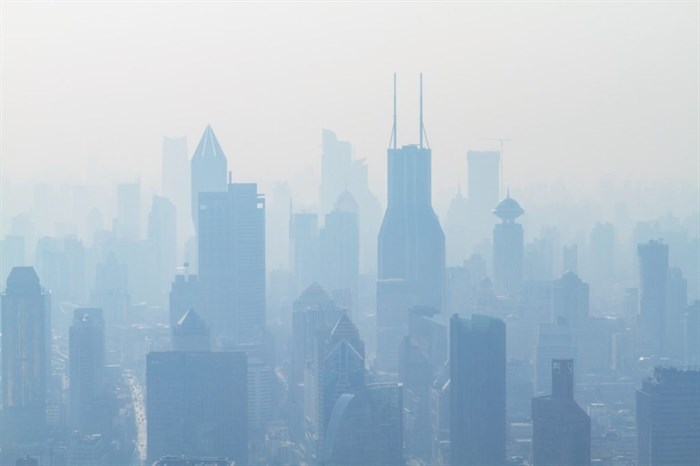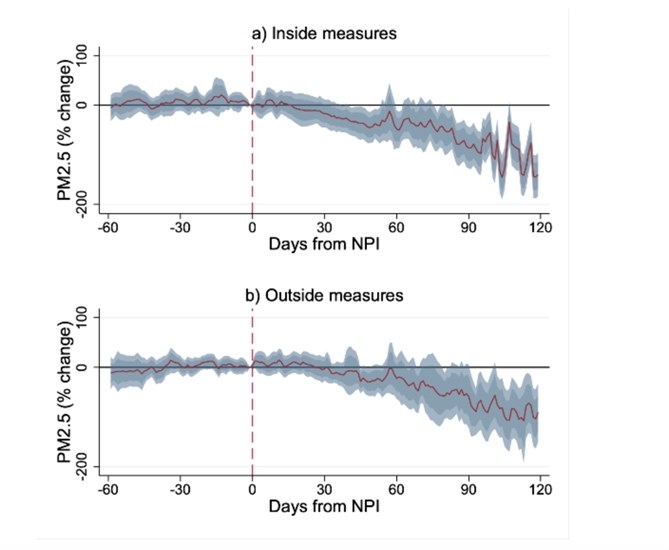
A study from UBC shows that a lockdown can, for example, reduce air pollution from traffic and industry but at the same time increase pollution from residential sources such as heating.
Image Credit: SUBMITTED/UBC
April 06, 2021 - 3:33 PM
The 2020 emptying of cities due to the COVID-19 lockdown had a salutary effect on one thing at least, according to a UBC study.
Those measures reduced air pollution by 45 per cent domestically and 35 per cent internationally on average during the first wave of lockdowns. But those decreases weren't long lasting or consistent across the board.
According to the UBC report parts of South America, Asia and the American Midwest saw an uptick in air pollution based on their economic activity.
“It’s a piece that shows us how complicated the economic activity and the environment relationship is,” UBC faculty of land and food systems assistant professor Dr. Frederik Noack said in a press release. “It’s really dependent on the development level and composition of the economy.”

Most changes in air pollution started to be seen after a lag of about one to two months after lockdown measures were set in place. The biggest reductions in air pollution were seen 90 to 120 days into lockdown.
Image Credit: SUBMITTED/UBC
The study shows that a lockdown can, for example, reduce air pollution from traffic and industry but at the same time increase pollution from residential sources such as heating.
Dr. Noack, also a Canada Research Chair in Environmental Economics, says these findings suggest that policies to curb air pollution should take all economic sectors and the response of people to these policies into account including a shift to more polluting activities. He adds that that targeted policies could reduce air pollution while minimizing economic losses.
The study also showed how industry-heavy countries like Canada, which saw a 30 per cent decrease in air pollution between March to August, 2020, could learn some environmental lessons from last year’s slowdown in mobility and industry.
Noack recommended that more industrialized countries like Canada learn from the pandemic by increasing flexibility for working from home after the pandemic, to reduce the impacts industry and transportation has on their air pollution.
“If we were to save the environment by only focusing on one sector [like limiting manufacturing, industry and transportation], it might give advantage to pollution in a different sector like agriculture," Dr. Noack said.

Most of North and South America, Europe, southern Africa, eastern Asia and the Pacific saw improved air quality (purple) during lockdown, but some parts of South America and Asia (orange) saw air quality worsen.
Image Credit: SUBMITTED/UBC
The study linked detailed data on lockdown timelines with satellite pollution (PM2.5) data from 162 countries, factoring in times where lockdown restrictions eased. The analysis spanned November 2019 to August 2020 capturing medium-run environmental impacts, since most lockdowns were imposed in March or April.
Most changes in air pollution started to be seen after a lag of about one to two months after lockdown measures were set in place. The biggest reductions in air pollution were seen 90 to 120 days into lockdown.
Although the study focused on global urban centres, they found significant differences in air pollution trends from country to country.
Some countries even saw an increase in air pollution of up to 25 percent.
Most of North and South America, Europe, southern Africa, eastern Asia and the Pacific saw improved air quality (purple) during lockdown, but some parts of South America and Asia (orange) saw air quality worsen.
“It’s really about the source of the pollution here,” Dr. Noack said. “Lockdowns don’t automatically mean air quality improves, because in less industrialized countries you might see more biomass burnings, increased agricultural activities and residential energy use.”
The study was a collaboration between researchers from UBC’s faculty of land and food systems, University of Lausanne, University of Zurich, University of Manchester, University of Bologna, the Enterprise for Society (E4S) Center, and London School of Economics and Political Science.
To read the whole report go here.
To contact a reporter for this story, email Kathy Michaels or call 250-718-0428 or email the editor. You can also submit photos, videos or news tips to the newsroom and be entered to win a monthly prize draw.
We welcome your comments and opinions on our stories but play nice. We won't censor or delete comments unless they contain off-topic statements or links, unnecessary vulgarity, false facts, spam or obviously fake profiles. If you have any concerns about what you see in comments, email the editor in the link above.
News from © iNFOnews, 2021